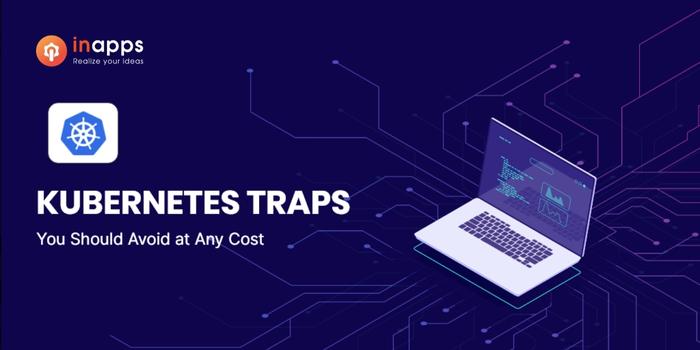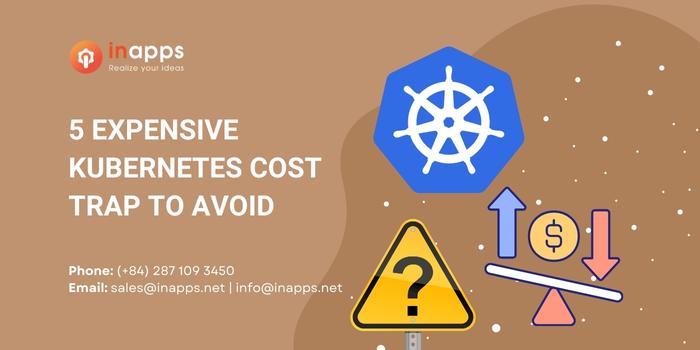- Home
- >
- DevOps News
- >
- 5 expensive Kubernetes cost traps and How to deal with them
5 expensive Kubernetes cost traps and How to deal with them.
Before containerization, allocating resources and costs were way easier. You just had to tag resources to a particular project or a team. Calculating the total project cost was easier once you mapped the vendor tags and identified the team that owns the project.
Naturally, in this scenario, you’d also run the risk of overprovisioning your resources. Developers might order more resources than they need to make sure applications run without interruption.
As Kubernetes and other containerization tools become more widespread, the traditional process of allocating and reporting on costs doesn’t work anymore. Figuring out Kubernetes cost estimation, allocation and reporting aren’t easy.
If you still can’t make sense of your team’s expenses in detail, don’t worry. You’re not the only one out there who struggles to keep costs at bay. To improve your cost control, start by exploring these cost challenges.
Avoid These 5 Kubernetes Cost Traps

1. Calculating Cost Per Container
Calculating the cost of a single container isn’t hard on its own, but it requires infrastructure and the time to do it.
Kubernetes clusters are shared services run by multiple teams, holding numerous containers and containing various apps. Once a container is deployed, you use some of the cluster’s resources and pay for every server instance that is part of this cluster.
Now imagine that you have three teams working on 10 unique applications. Knowing which application uses your cluster resources is next to impossible because each of these projects uses multiple containers. You have no idea which part a given team is using and how much of it is being used in a particular project.
In short, it’s not clear how many resources an individual container uses from one specific server. This makes calculating and allocating costs a tad more difficult.
2. You Pay via Different Cost Centers
Your company contains multiple cost centers, and not all development costs come from the DevOps budget. Some applications might be created by one of your product teams, an R&D team or another team in your IT department for a shadow IT project.
The size and structure of your organization are key here. If your company offers multiple digital services, each of which has its teams and budgets, tracking the costs of the cloud services gets complicated. When multiple teams use the same cluster, defining which team or project is responsible for which part of the final bill becomes a challenge.

3. Tracking Costs Across Clouds Is Not Easy
It gets even harder to track once you consider multicloud. A Gartner survey of public cloud users shows that today 81% of respondents are working with two or more providers. According to ICD, 90% of enterprises will rely on multiple clouds or a mix of on-prem, private, hybrid and public clouds by 2022.
So, soon you might be running your Kubernetes clusters across multiple clouds and your containers will be using different nodes.
Your applications can be scattered across different clouds such as AWS, Google Cloud Platform, Azure or Digital Ocean. Each of them might host just a tiny part of your overall workload, which further complicates tracking nodes and clusters.
4. Scaling Complicates the Matter Further
To make the most of Kubernetes, most teams use built-in Kubernetes autoscaling mechanisms. The tighter you configure them, the less waste and lower costs of running your clusters.
While Vertical Pod Autoscaler (VPA) automatically adjusts requests and limits configuration to lower overhead, Horizontal Pod Autoscaler (HPA) focuses on scaling out to reach the optimum amount of CPU or RAM allocated to an existing instance.
These scaling mechanisms affect cost calculation, however. VPA constantly changes the number of requests on a container, expanding and shrinking its resource allocation. HPA, on the other hand, changes the number of containers dynamically.
For example, imagine three web server containers running during the night. During peak hours, HPA scales from three to 50 containers. Then, it scales down during lunch and then back up. In the evening it settles at a low level.
This means that the number of containers and their sizes are extremely dynamic, making the process of calculating and forecasting costs much more difficult.
5. Containers Are Way More Dynamic
With containers, you can reschedule workloads across a region, zone or instance type. A container’s lifespan is just one day. It’s a small glimpse in time when compared to how long a virtual machine can last. More and more people run functions and cron jobs on Kubernetes. The lifetimes of these are from seconds to minutes.
The dynamic nature of the containerized environment adds another layer of complexity to the mix. Your cost management system needs to be able to handle that.
How to Handle These Kubernetes Cost Issues
To avoid falling into one of the traps outlined above, you need a solid cost analytics process based on reliable data sources. Here’s an example to show you what it could look like:
- Find a cost visibility tool to track costs in detail — for example, at the microservice level.
- Once you have cost visibility in place, you can set precise budgets and monitor elements such as traffic costs to understand them better.
- Next, allocate your costs by namespace, pod, deployment and label.
- Analyze the pricing information to predict how much you’ll have to pay next month.
- Keep monitoring costs against your estimates and pinpoint cost or usage anomalies to analyze them further.
Currently, most companies solve this problem manually, but what if you could automate this entire process?
Solution: Automating Kubernetes Cost Management

Allocating resources, calculating costs and analyzing Kubernetes pricing information shouldn’t be as challenging as it is today. Syncing up the cost and resource allocation is the way to go.
What are the must-have features to look for in an automation tool?
- Advanced cloud bill analysis and cost visibility feature with the ability to analyze costs down to individual microservices and get universal metrics for any cloud provider.
- Automated instance selection and rightsizing.
- Use of spot instances for up to 90% cost savings.
- Forecasting expenses for projects, clusters, namespaces and deployments.
Automated Cost Management
Betting on manual strategies for controlling your Kubernetes cloud costs is risky. They’re usually time-consuming, error-prone and difficult to maintain.
Deploying an automated cost management solution saves you lots of headaches and helps you focus on what matters most to your business: delivering quality service to customers.
We built CAST AI to do just that. Book a demo and give it a spin to see your Kubernetes costs go down.
List of Keywords users find our article on Google
[sociallocker id=”2721″]
| “cast ai” |
| best kubernetes book |
| kubernetes cost management |
| “cast.ai” |
| aws pinpoint |
| azure cost management |
| kubernetes save cost |
| kubernetes cost visibility |
| finops azure |
| azure finops |
| kubernetes cost forecasting |
| server development cost |
| azure kubernetes pricing |
| best book kubernetes |
| pinpoint pricing |
| fintech app development cost |
| cost control wikipedia |
| oracle fusion applications vision instance free |
| cast software linkedin |
| k8s cloud cost anomaly |
| oracle cloud functions pricing |
| google kubernetes comes under which of the following services |
| oracle cost management cloud |
| vpa touch |
| cast-ai |
| best cast solution for hospitality |
| kubernetes cost savings |
| oracle retail allocation |
| the kubernetes book |
| saas rightsizing |
| project cost controller jobs |
| google cloud cost anomaly |
| pinpoint aws |
| spot instance interruption rate |
| best book for kubernetes |
| cluster headaches wiki |
| azure devops cost |
| cast ai |
| container cost observability |
| gartner cost optimization tool |
| aws pinpoint analytics |
| cluster traps |
| 75 hard challenge template |
| aws cost allocation tags |
| kubernetes cost monitoring |
| k8s cost management |
[/sociallocker]
Let’s create the next big thing together!
Coming together is a beginning. Keeping together is progress. Working together is success.




















